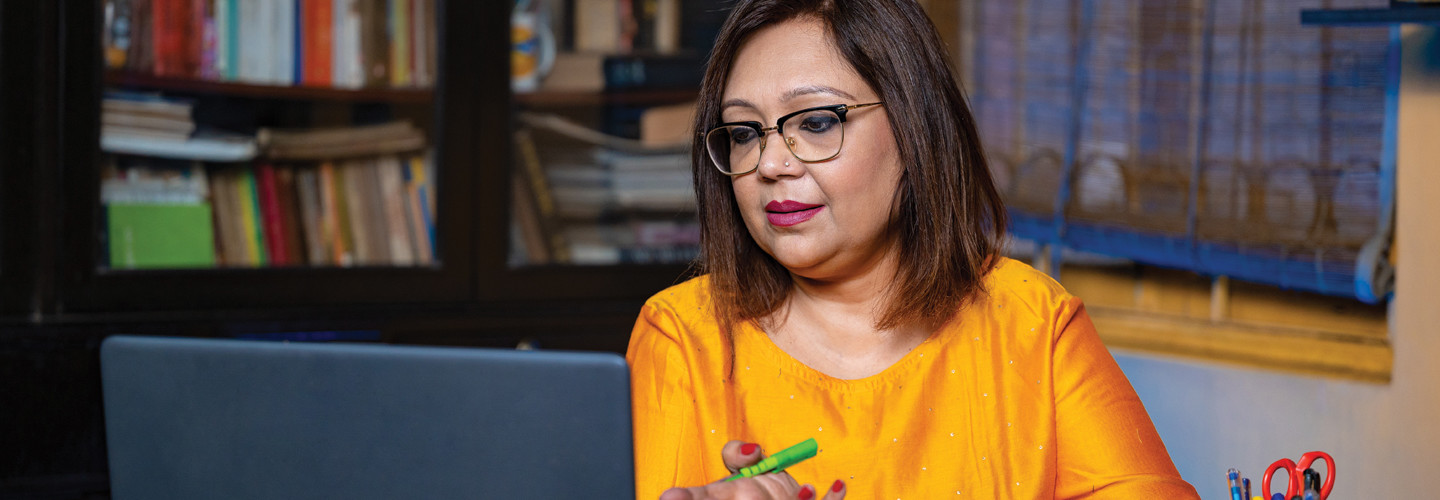So, when a 2022 JAMA Pediatrics study found that during the COVID-19 pandemic, screen time among children ages 3 to 18 went up 59 percent globally, our district took notice. We also considered a 2019 longitudinal study of Australian children reported in the International Journal of Behavioral Nutrition and Physical Activity. The study notes that among the following categories of screen time — social, educational, passive, interactive and other — educational screen time provided the most benefit.
Curious as to how much screen time students across our district were experiencing and how they were using technology to learn, our district leaders decided to take a closer look. To get a sense of what was happening in the classroom, our instructional team facilitated a series of “learning walks.” What we discovered was eye-opening.
RELATED: Check out the research on screen time and school-aged kids.
We Designed a Student-Centered Tool to Observe Ed Tech Use
We started the process by creating a student-centered observation tool to help us reflect during the walks. The tool implemented the four C’s of 21st century learning: creativity, communication, collaboration and critical thinking. It also included Ruben Puentedura’s SAMR (substitution, augmentation, modification and redefinition) model of technology integration, and some popular blended-learning models such as station rotation, whole-group rotation, flipped classroom and playlist. In addition, we paid close attention to the program or tool that teachers and students used with particular technologies.
We then traveled to all 16 of our campuses (10 elementary schools, three middle schools and three high schools) to see blended learning in action. For each school, we formed teams of six to 10 people, which included district– and school-level staff. We spent an hour observing up to six classrooms, followed by a half hour to debrief.
DIG DEEPER: Learn how technology supports personalized learning in K–12.
The Truth About Higher Student Engagement
After completing all 16 learning walks, district and school leadership gathered at a monthly meeting where they identified similarities and differences among their observations as well as any valuable takeaways.
We found higher levels of student engagement when teachers used gamification tools; when teachers provided student voice and choice to display student mastery; and when they prioritized communication, collaboration, creativity and critical thinking.
Some school leaders noticed large amounts of substitution and augmentation in student learning experiences. There was more evidence of students using technology for communication and collaboration rather than for critical thinking or creativity. There were also some instances where the technology use could have been more purposeful and engaging instead of serving as a babysitter.
So, our group equipped each principal with a lesson plan containing an appropriate topic and lesson structure requiring them to choose how they would integrate technology using the models upon which we based the rubric. They then shared their creations with small groups of their peers, asking further questions and navigating the ensuing discussion.
DISCOVER: Here’s how technology enables collaboration on K–12 projects.
94%
The percentage of K–12 teachers responding to a 2022 nationwide survey who said ongoing professional development is important to a teacher’s effectiveness
Source: d2l.com, “D2L Survey Shows U.S. Teachers Want More Flexible and Timely Opportunities to Learn,” Feb. 15, 2022
Targeted Professional Development Is Key to Ed Tech Integration
While the learning walk process was not perfect, I think it showed our district and school-level administrators the importance of meaningful, engaging technology integration within the classrooms. It also revealed the importance of planning for technology integration by identifying the tools, the structure for integration and the purpose behind the technology use.
Each school came to its own conclusions on how next to proceed. Some decided to conduct more learning walks for teachers to learn from each other, and others promoted teacher-led professional development. On the district level, we provided targeted technology-focused PD for teachers, which focused on tech integration, equipping teachers with ideas about what could be and not mandating any one approach.
So far, we’ve received positive feedback on the introduction of new tools, the reiteration of what integration could look like and reminders on student ownership in the process.










